Sonja Kielty, our exhibitions curator agreed to write a blog post for us to give an insight in the process that lead to the recently opened Alke Schmidt: Wonder & Dread exhibition.
She writes:
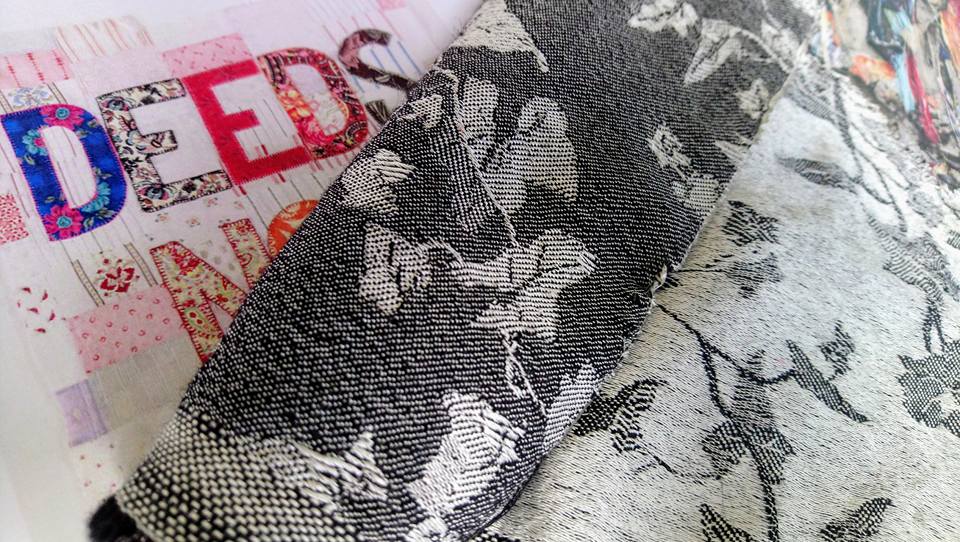
Alke first contacted BMG following her selection of paintings in Salts Mill for Saltaire Inspired in 2015. I absolutely loved her work and knew we needed to show it. It became clear on reading her proposal and past shows at Cromford Mills and the William Morris Gallery that it was perfect for Bradford Industrial Museum – a working textile mill until the 1970s. Alke’s work was so striking, so beautifully rich, so purely historical. This was an artist who clearly wasn’t just talented artistically but knew her textile history. She suited the Industrial Museum perfectly.
The Industrial Museum houses floors of social and technological history items and the remit for exhibiting there is to work with these collections of never ending objects – to peruse, retrieve, spruce them up, show them off. Each artist who enters brings a fresh pair of eyes, a new vision, a mind of new ideas as they hear the stories, the facts, the history from the social history curators. Alke had that excitement from the minute we introduced her to Liz McIvor – social history & technology curatorat the time. Conversations involving alpacas, Peruvian trading, 1800s, ships, mills, fires, women, children, desperation, greed bled into the world of Saltaire, espionage, German partnerships, dyes, colour labs, sample books, Bangladesh, sweat shops…
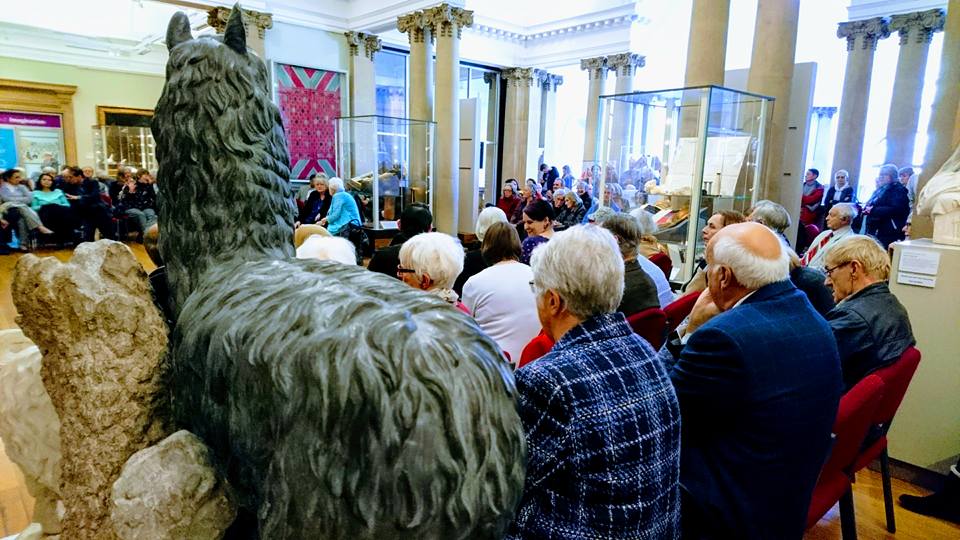
Alpacas have surrounded my very being in work since starting at BMG over 12 years ago. In every building, on every wall there’s reference to them! This time I entered their woollen history as never before.
The sounds, colours, faces, imaginary or real, animal or human, patterns and feelings all became clear as we decided with great difficulty, what we could narrow down and focus on, all the layers, information and strands textile manufacturing unfolded.
We also realised that to bring the original artworks, make some new works especially for Bradford based on our collections and city, produce postcards for the museum shop and host a series of events for the public to learn and enjoy, was going to cost us more budget than we had. Alke set to work on an in depth Arts Council England Grants for the Arts application – we worked on budget, ideas for engagement with schools and visitors. This application was successful. We met with Irene Lofthouse, artepreneur who will be hosting family and school drop-ins during 2018, becoming Mary Ryan, 18th century mill worker. We also met with Naseem Darbey, artist and educationist who will be running a series of workshops for schools. Again – with huge creativity afoot from all 3 artists – the programme has been something to aspire to. An offer to visitors and schools and curators that can only innovate and infuse knowledge that hasn’t been collated before.
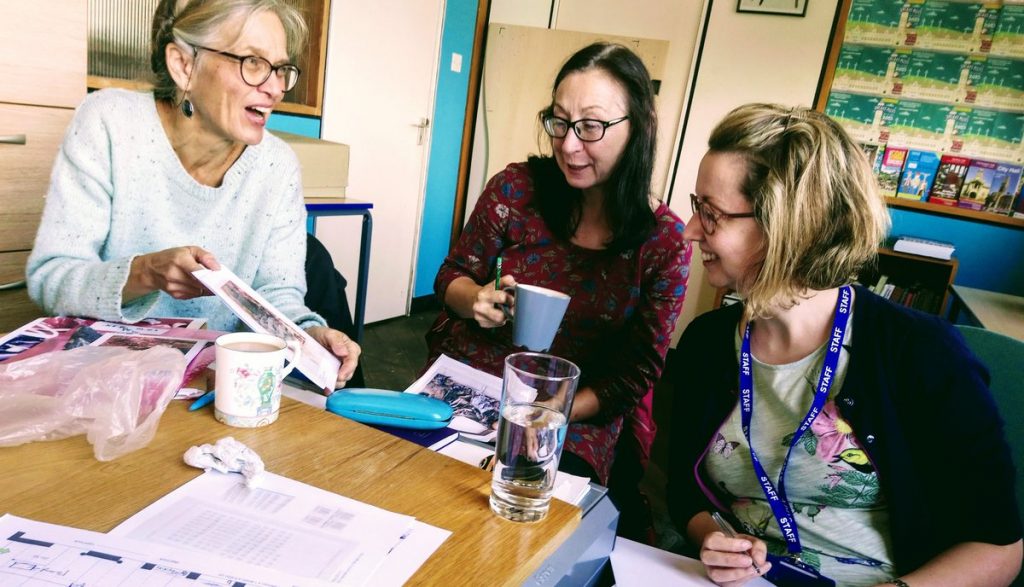
In the meantime, Alke had been working on the residency with us as part of the Arts Council funding. She aimed to create 3 or 4 new works as part of the exhibition – all incorporating Bradford based fabric, yarn and story. Without giving too much away, I suggest you visit you the exhibition to see these! Stunning new works on fabrics kindly donated by local companies, plus access to behind the scenes working time in Haworth Scouring where Alke could meet workers there, modern day mill workers. She sketched in situ and has produced some very different new works.
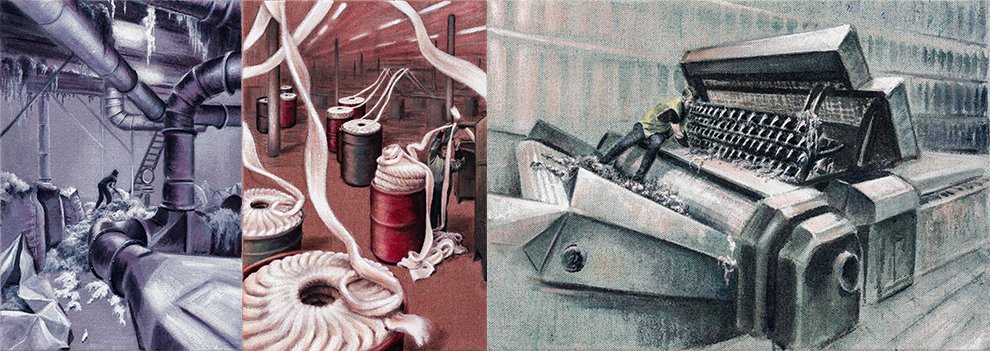
Camira Fabrics have written a blog on Alke’s time with them.
Given Alke’s interest in the workers involved at every stage of textile production she decided to put the Peruvian alpaca farmers centre stage in her new artwork by including a portrait of an alpaca farmer living in Peru’s highlands today. Alke found her “model”, Cristina, through Allpa, a Peruvian NGO that works with indigenous weavers, jewellers and other craftspeople to produce high-end textiles and fashion accessories.
The concept of “Wonder and Dread” is to incorporate, in each work, a fabric that relates to the story being told in that work. Alke looked at comparable Victorian fabrics from Salts Mill. Alke spent time at the British Alpaca Fashion Company that is producing, among other things, alpaca/silk fabrics. The company has a herd of some 85 alpacas in Somerset. Alke showed them Bradford Museums and Galleries Salt’s sample and they suggested they could try and recreate one of Titus Salt’s alpaca/silk designs and they did, using Salt’s ivy pattern, with Gainsborough, a weaving company.
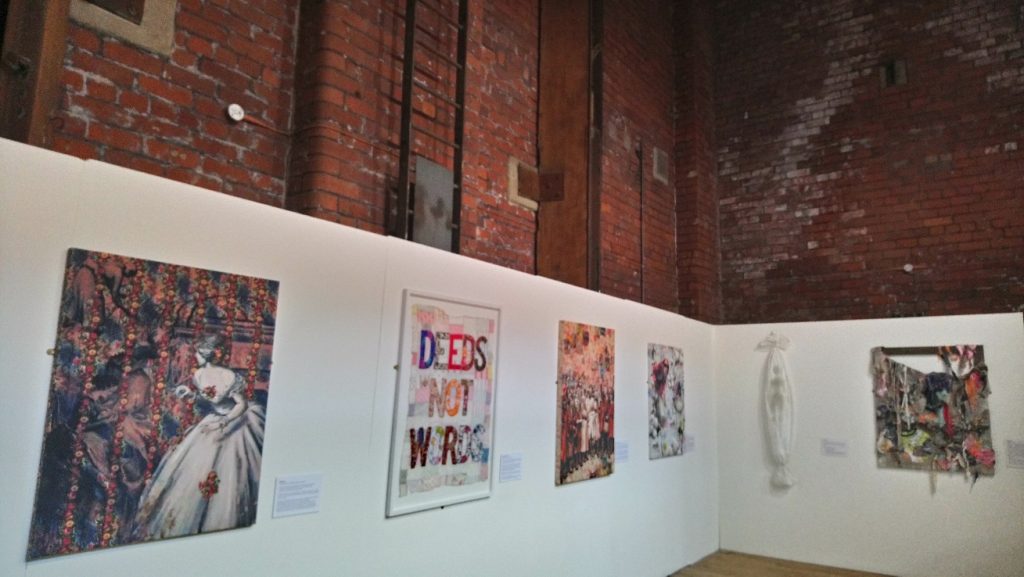
I visited a small selection of Alke’s artwork which was on display at the People’s History Museum in Manchester earlier on this year to talk to the curator there who has already worked with the artwork. Alke’s work certainly suited the theme of ‘People’s History’. It became apparent to me that it was the absolute right decision to host a bigger show of Alke’s work in such an industrial, historical setting as the Bradford Industrial Museum.
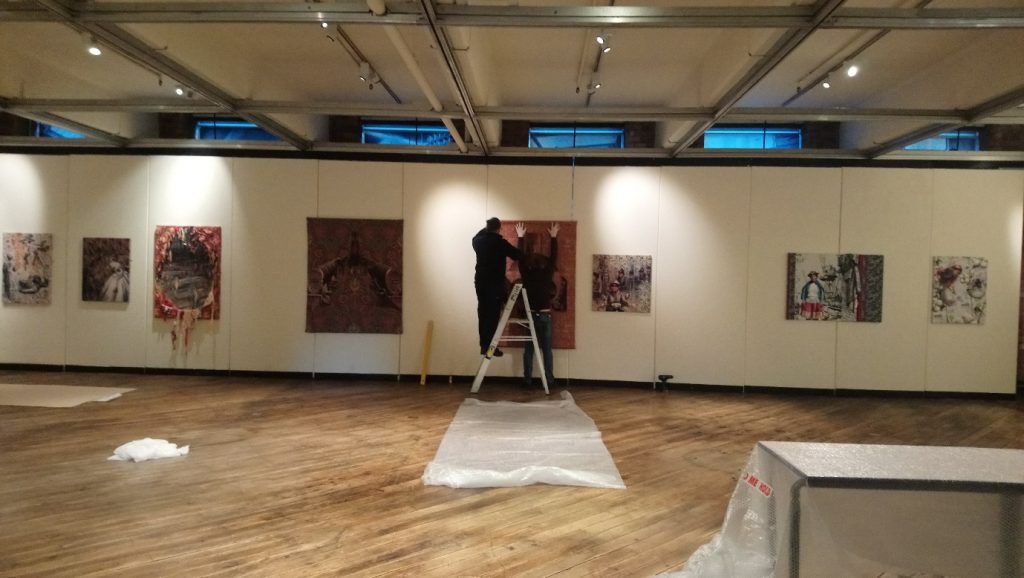
Installation is the most enjoyable, creative part of the job for an exhibitions curator. Unwrapping, lifting, moving, laying out and moving again, the full story finally being set out to be told. After all this time, finally, here’s where we get to show everyone what we’ve been working on. The first test is on the exhibitions team – the technicians, the assistants, the conservators – their initial reactions to seeing the works, piece by piece as the room becomes apparent. Some colleagues will have seen the work previously, in images, or on the van or with the artist. But this is where everyone views them in the flesh. It was surprisingly difficult to hang. The space is huge. The large works suddenly seemed small. Even today, as a museum, this building envelopes you, towering its authority. After many layouts, What’s App messages and phone calls to Alke in London, we had it. We absolutely, suddenly had it. The perfect curatorial moment.
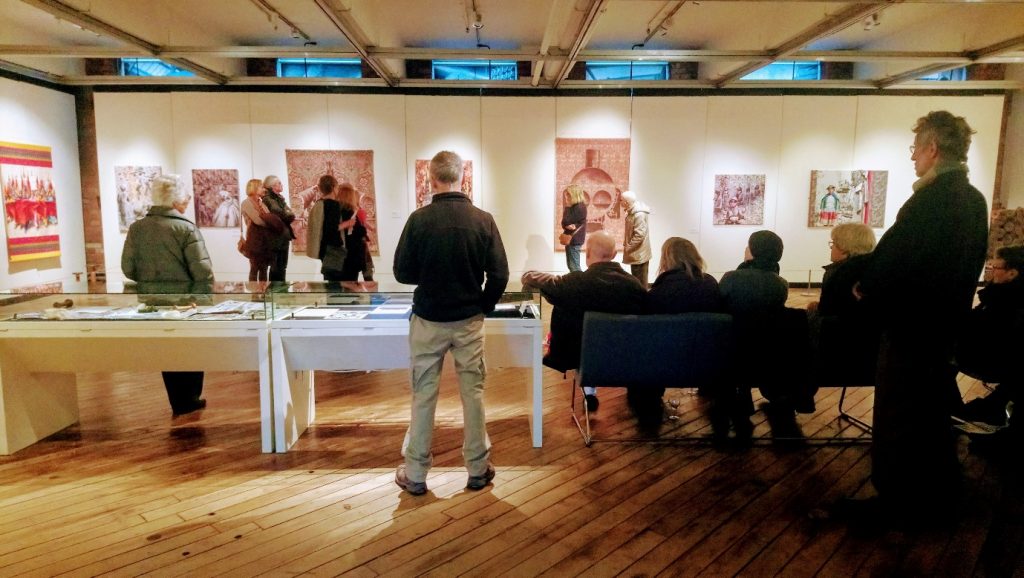
The exhibition is now open and on until November 2018. It looks beautiful. It feels inspirational. Close up, it tells of sadness, human greed and disdain. With closer inspection it drips of tears, blood and pain. The themes of industrial revolution, international trade, slavery, death, politics and modern day textile manufacturing immerse the viewer into the sights, sounds, faces, feelings that we felt way back in the initial talks. Stand back again and it’s beautiful. Just like the perfect strands in a piece of textile. Where do your clothes really come from and who’s been sacrificed for you to wear them?

One Response
This exhibition is beautiful and thought provoking. I hope many people see it.